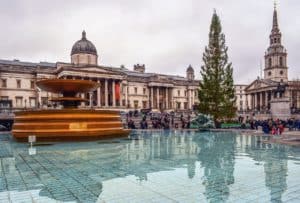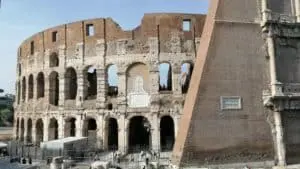Traditional Irish Wedding Customs: Exploring The Timeless Traditions
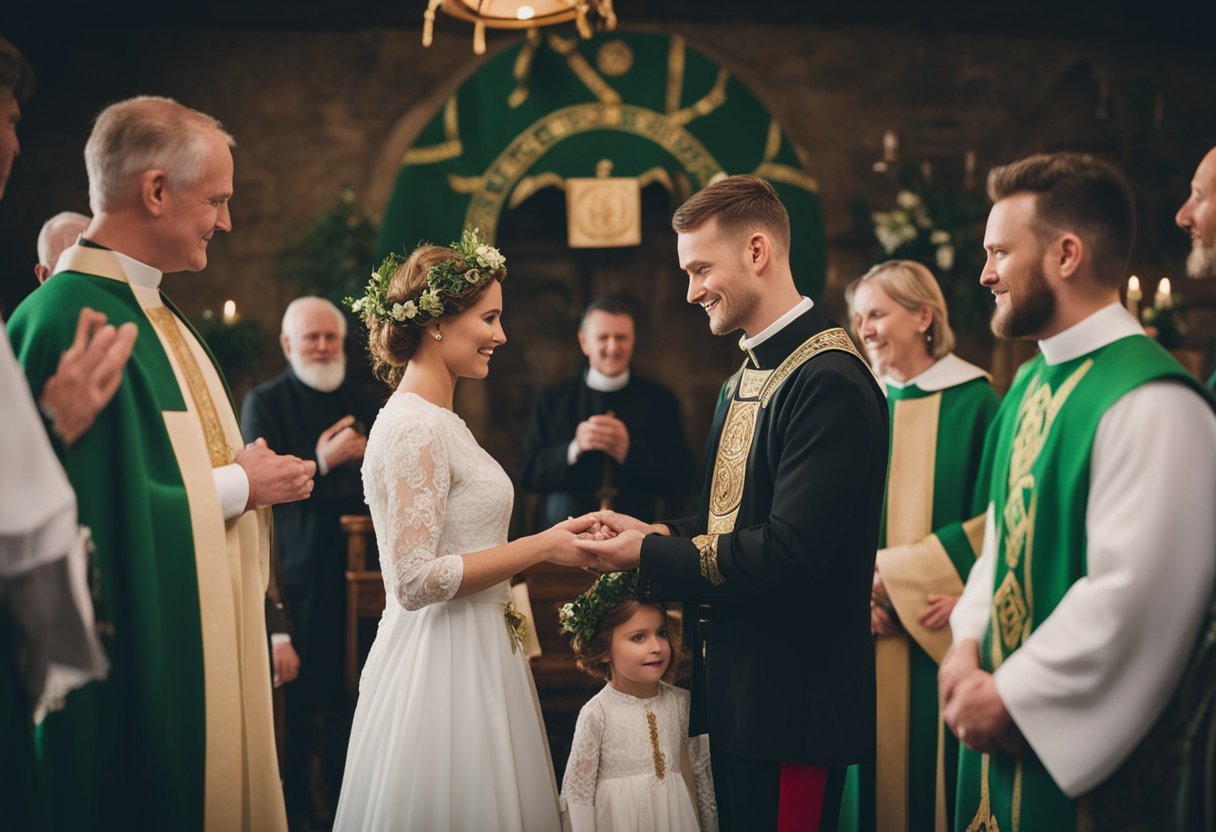
Updated On: April 24, 2024 by Maha Yassin
Traditional Irish wedding customs are a tapestry of cultural rituals celebrating love and heritage. Each custom, steeped in history, adds a distinct charm to the matrimonial celebrations. In Ireland, the significance of wedding traditions spans the ages, intertwining Celtic symbolism with family and community values. This legacy continues today as couples honour their ancestry while adding personal touches that reflect their own stories.
On their wedding day, Irish couples often incorporate age-old customs. The intricate dance between the past and the present is evident in the attire, with some opting for the full formal kilt or a Brian Boru jacket, symbolic of Irish warrior king heritage. Ceremonial customs are equally as poignant, ranging from tying the handfasting cord to signify unity to the ringing of the wedding bell to ward off evil spirits. Wedding receptions are infused with traditional music, energetic dances, and the sharing of Irish blessings, all contributing to a celebration rich in symbolism and jubilation.
Engagement and Pre-Wedding Rituals
As we explore the customs leading up to a traditional Irish wedding, two significant aspects stand out: the proposal, often including a Claddagh ring as a symbol of love, loyalty, and friendship, and the special blessings sought to bestow good luck on the couple’s future together.
Proposal and Promise Ring
The proposal in Ireland is a meaningful tradition steeped in symbolism. The Claddagh ring, featuring two hands holding a heart topped with a crown, is a timeless emblem of love and commitment. When used for an engagement, it’s worn on the left hand with the heart pointing outwards, signifying that the wearer’s heart is yet to be won. Upon acceptance, the ring is turned inward to show the heart is taken. This ring encapsulates the essence of engagement in Irish culture – a promise of unity, fidelity, and a bond held strong by the hands of friendship.
Pre-Wedding Blessings
Before the wedding, Irish couples often receive pre-wedding blessings from their families, strengthening the ties between the newly united families and friends. This may involve a ‘handfasting‘ ceremony, an ancient Celtic ritual where the hands of the couple are tied together as a symbol of their commitment – quite literally tying the knot. Such rituals are cherished as they weave the couple’s future with the threads of ancestral tradition and shared heritage, ensuring that blessings and good luck follow them into married life.
Significance of Wedding Attire
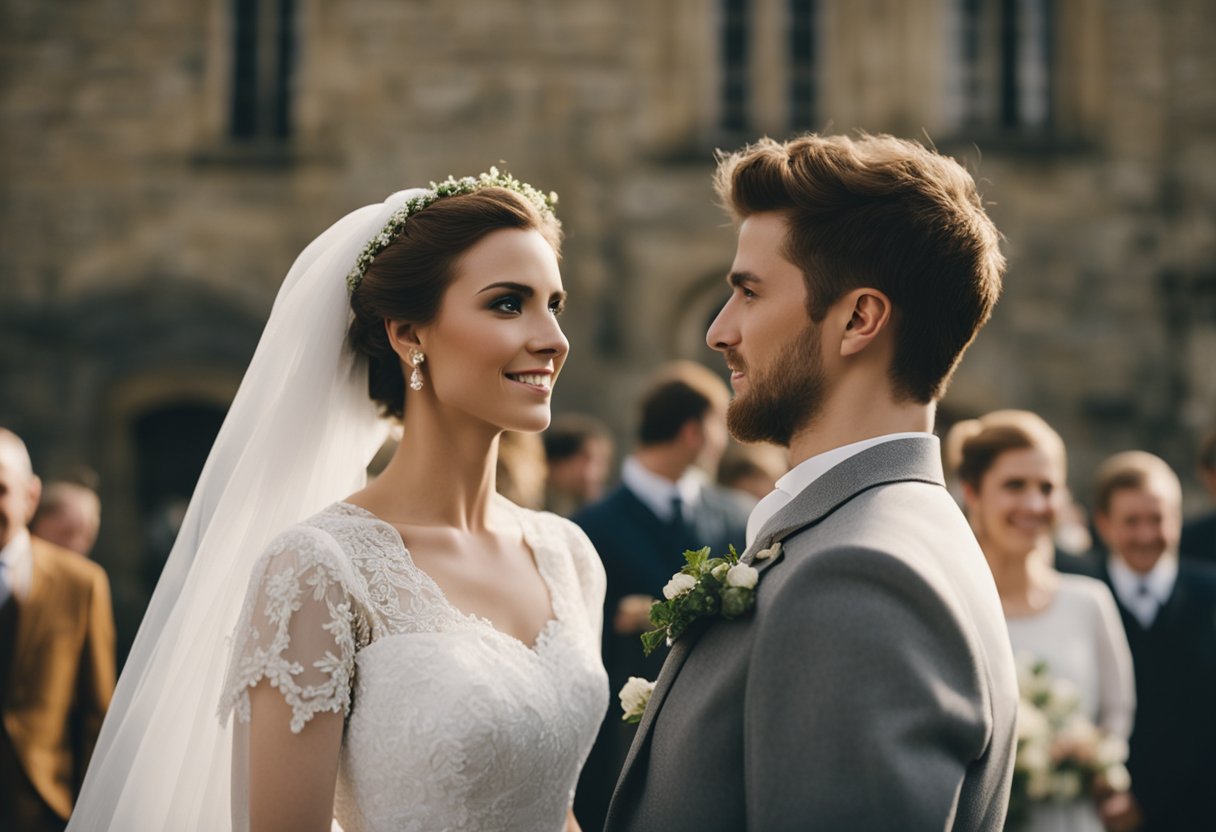
In traditional Irish weddings, every piece of the bride and groom’s attire is laden with symbolism, reflecting their heritage and hopes for marital bliss. Our exploration of this theme reveals two critical elements: the Claddagh Ring and Irish textiles, famously wrought in lace and linen.
The Claddagh Ring
The Claddagh ring is a storied emblem of love, loyalty, and friendship. Often passed down through generations, this distinctive ring features two hands clasping a heart, topped with a crown. Irish brides might receive a Claddagh ring as an engagement or wedding ring, signifying their commitment. For those with this heritage, wearing a Claddagh ring links them to Irish ancestors and customs.
Irish Lace and Linen
Irish lace, renowned for its delicate craftsmanship, is prominently in bridal gowns and veils, lending elegance and tradition to the attire. Incorporating motifs like shamrocks and Celtic knots, this lace embodies Irish identity.
Fine linen, another staple of Irish heritage, is often the material of choice for wedding ensembles, appreciated for its quality and durability. Historically, some Irish brides would opt for dresses in blue, a colour signifying purity, long before the advent of the white dress norm. Today, the adage “something blue” continues to influence bridal accessories, nodding to this old custom while celebrating timeless Irish culture.
Our attire is more than mere fabric; it’s an intricate tapestry of beliefs, stories, and connections to our rich cultural tapestry.
Irish Wedding Customs
Irish wedding ceremonies are steeped in tradition, combining ancient Celtic customs with symbolic rituals that resonate with the emotions of the occasion. Each element of the ceremony, from handfasting to the unity candle, is rich with meaning and rooted in Irish heritage.
Handfasting Ceremony
Handfasting is a poignant Celtic tradition where we physically represent the couple’s bond by tying their hands together with a cord or ribbon. This act symbolises their commitment to one another and is often referred to as the origin of the phrase “tying the knot.” During the handfasting ceremony, the couple’s hands are bound while they make their vows to each other, entwining their lives and spirits.
Exchanging Vows
Central to any wedding ceremony is the exchange of vows, when the couple promises fidelity, love, and support. Celtic symbols and language can imbue these vows in a traditional Irish ceremony with additional cultural resonance. The couple may recite their promises in Gaelic or incorporate Celtic symbols in the words spoken, ensuring these customs are carried forward to the next generation.
The Unity Candle
The unity candle is a more modern addition to Irish ceremonial customs yet fits with older traditions. Here, we see the couple each take a flame and light a larger candle together, symbolising unity and the joining of two families. This candle is sometimes encircled with a wreath of Celtic knots or other Celtic symbols to celebrate the heritage that binds them.
Symbols and Blessings
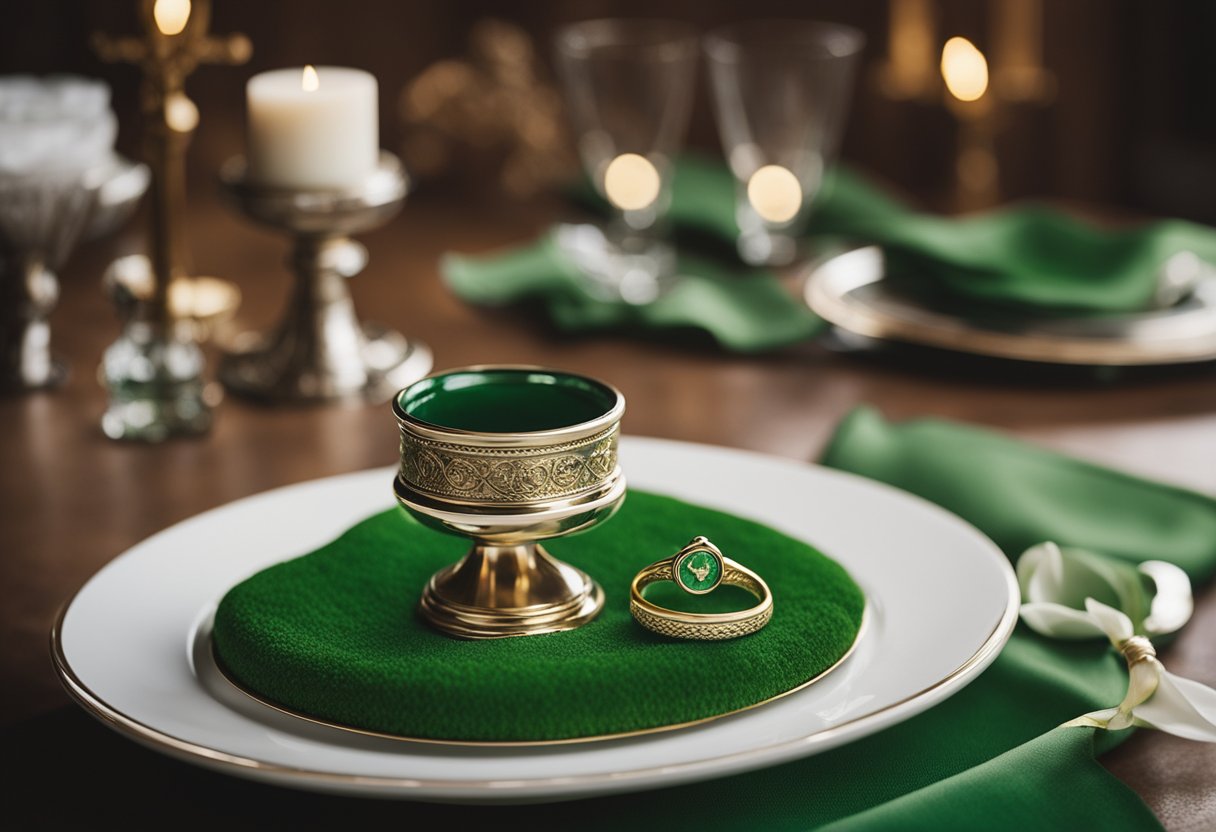
In traditional Irish weddings, specific symbols and blessings carry deep meanings and are integral to the celebration. These customs, rooted in Celtic tradition, are believed to bring good fortune and fidelity to the wedded couple.
The Horseshoe and Wildflowers
Horseshoes, a symbol of good luck, play a pivotal role in the matrimonial festivities. During the ceremony, brides often carry a horseshoe, which must be facing upwards to ensure that the luck doesn’t ‘fall out’. To incorporate nature’s emblem of beauty, many couples incorporate wildflowers into their décor and bridal bouquets, reflecting their commitment to purity and natural fidelity.
Blessings and Toasts
Replete with heartfelt sentiments, wedding blessings are a cherished tradition. Couples may select an ancient Celtic handfasting ceremony to physically and symbolically unite their bonds. The ritual involves tying their hands with a cord or ribbon, symbolising their intertwined lives. During the festivities, toasts are made, many of which are derived from traditional Irish wedding blessings. These toasts often encapsulate wishes of prosperity, happiness, and a harmonious marriage.
Wedding Reception Traditions
At an Irish wedding reception, the marriage celebration extends well into the evening with time-honoured customs. These customs revolve around two main pillars: vibrant music that keeps the feet tapping and a gastronomic feast honouring Irish culinary traditions.
Music and Dancing
Music is a cornerstone of any Irish wedding reception, with the room often filled with the lively sound of bagpipes and uilleann pipes, traditional Irish instruments. The entertainment typically includes seasoned Irish musicians who set the mood for Irish dancing, with guests eagerly joining in dances like the ceili. This is when everyone, from the youngest to the oldest, links arms and steps to the spirited melodies—a true reflection of Irish conviviality.
The Wedding Feast
The wedding feast is a lavish spread that is deeply rooted in Irish hospitality. Tables typically brim with hearty local fare, where traditional dishes such as Irish stew or colcannon are served, often accompanied by freshly baked soda bread. To keep with the Irish wedding traditions, no feast is complete without raising a pint of Guinness in celebration, making drinking as much a part of the ritual as the food itself.
The wedding reception focuses on generous portions, warm merriment, and everyone coming together as family, friends, and new acquaintances to toast the newlyweds. The combination of good company, great food, and lively tunes makes for a quintessentially Irish wedding experience.
Lucky Charms and Superstitions
Irish wedding customs are steeped in tradition, with various charms and superstitions woven into the ceremony to ensure the couple’s good fortune. Here, we explore the intricate symbols and beliefs intrinsic to Irish culture and the matrimonial celebration.
Lucky Symbols
Several lucky symbols are incorporated at an Irish wedding to bring good luck to the couple. These include:
- Horseshoes: Considered a harbinger of good fortune, brides might carry a real horseshoe during the ceremony. It is usually carried with the open end up to ‘catch’ the luck.
- Child of Prague: Placing the Child of Prague statue outside is believed to ensure good wedding weather, offering sunshine on the wedding day.
- Celtic Knots: These endless loops symbolise eternal love and are often seen on wedding bands or other ornaments.
- Confetti: Traditionally made from rice or flowers, confetti is tossed over the couple, symbolising fertility and prosperity.
Wedding Weather Superstitions
- The Cuckoo: Hearing a cuckoo on the wedding morning predicts a good marriage.
- The Goose: If a bride hears a goose on her wedding day, it’s considered highly auspicious.
- The aforementioned Child of Prague, apart from being a lucky charm, is also intertwined with weather-related beliefs.
- Unlucky omens: Certain days and months are traditionally avoided for weddings due to superstitions about bad luck.
Irish weddings are a beautiful tapestry of customs and lore, with every charm and superstition representing the community’s wish for the couple’s happiness and prosperity.
Post-Wedding Customs
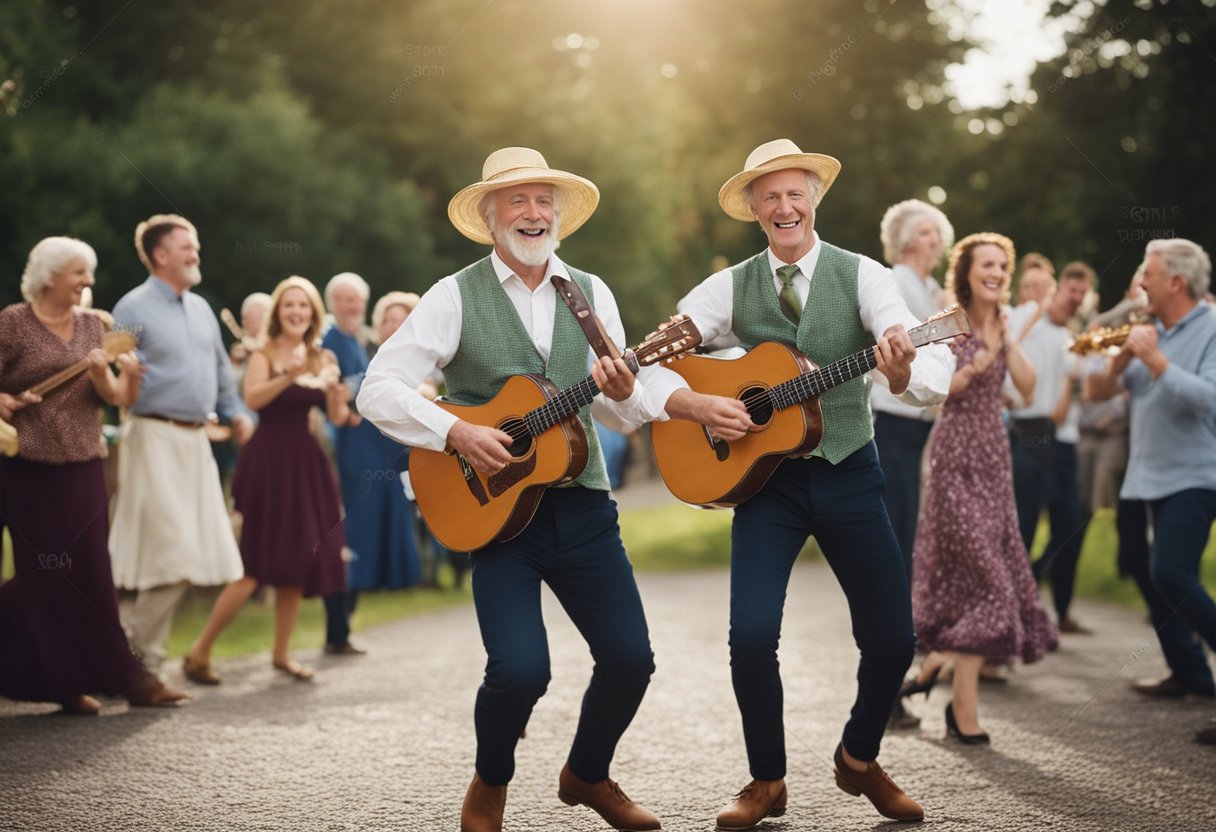
After the wedding ceremony, Irish couples usually engage in post-wedding traditions that mark the beginning of their new life together. These customs are deeply rooted in celebrating the couple’s union and setting the foundation for their future.
Travel and Honeymoon
Traditionally, Irish newlyweds may depart for their honeymoon immediately after the wedding reception. This private getaway lets the couple celebrate their marriage intimately and often involves travel to a romantic or meaningful destination. Particularly in the summer months, popular choices can include locations known for their natural beauty and serenity, providing a tranquil start to married life.
Post-Wedding Celebrations
Upon return from their honeymoon, it’s not uncommon for couples to host a gathering or afters for friends and family. This celebration allows those who may not have attended the wedding to share in the couple’s joy. It’s typically a less formal event reinforcing the communal aspect of Irish weddings, with music, dancing, and toasting often taking centre stage.
Modern Adaptations
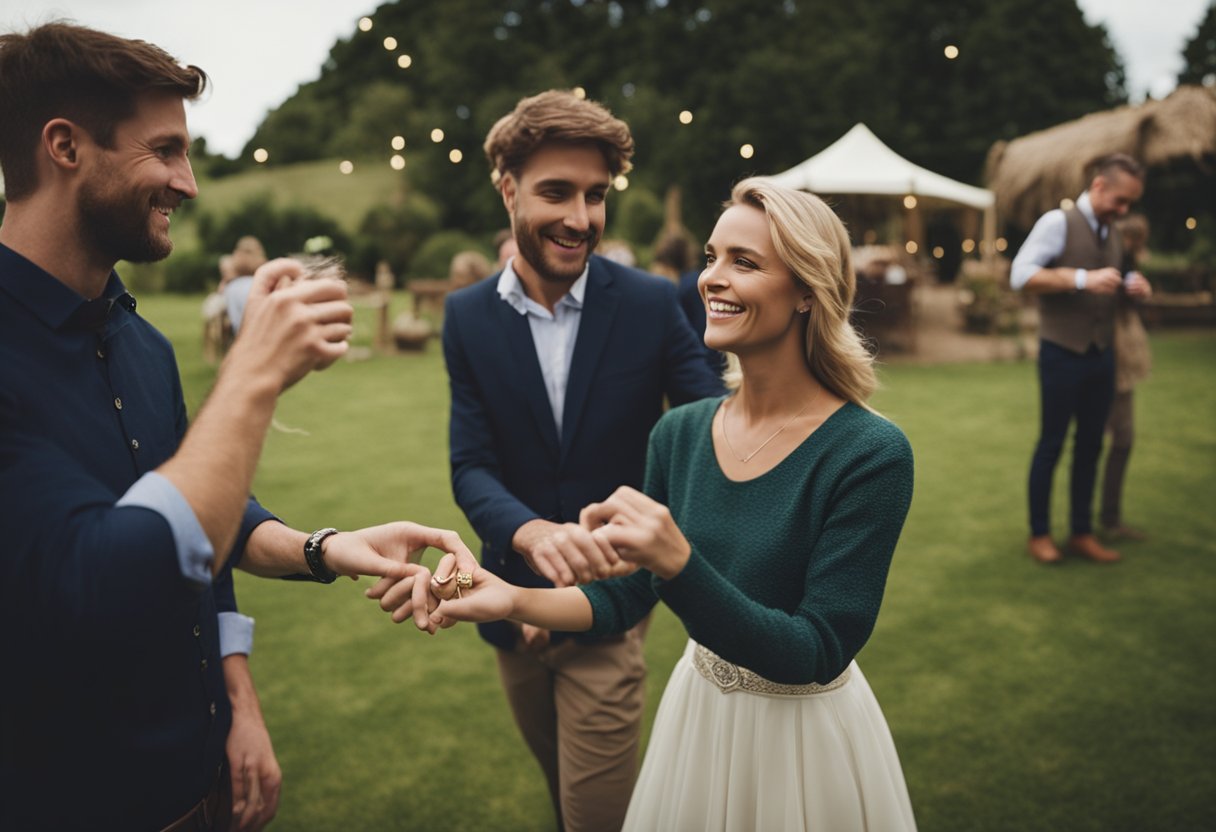
In the ever-evolving landscape of matrimonial celebrations, the charm of tradition meets contemporary style within Irish weddings. Today, Brides and grooms look for ways to balance respect for heritage with modern tastes in their wedding planning.
Contemporary Irish Weddings
Modern Irish weddings blend time-honoured customs with recent trends, making each ceremony and celebration unique. Wedding Dresses have transformed, with some brides choosing to incorporate Celtic designs or opting for emerald green hues instead of the classic white gown. The Claddagh Ring, a symbol of love, loyalty, and friendship, remains popular, often given a fresh design to suit contemporary aesthetics.
Wedding Ideas have expanded to include eco-friendly options, like using locally sourced flowers and organic food and incorporating digital planning tools. Couples are adopting online platforms for invitations, organising and sharing their special day with friends and family worldwide.
Modern Irish couples are melding the richness of their ancestor’s traditions with their flair when it comes to the planning stages. This might include handfasting—a tradition signifying the binding of two lives—with new materials or meaningful items representing the couple’s individual journey.
Receptions are being transformed with state-of-the-art venues hosting live bands playing traditional Irish folk music and modern tunes to entertain guests of all generations. Fusion menus introducing contemporary twists to traditional Irish dishes are becoming the new norm.
In these contemporary celebrations, it’s clear that the essence of Irish tradition thrives, artfully woven into the fabric of modern expression and festivity.
Traditional Festivities and Entertainment
The festivity and entertainment segment harkens back to a rich cultural tapestry in Irish weddings. We find ourselves immersed in joyous music and symbolic edibles that bear great significance.
Live Music
Music is the soul of any Irish celebration, and weddings are no exception. We traditionally witness various traditional instruments, such as uilleann pipes and bagpipes, setting the stage for a lively atmosphere. Live bands skillfully intertwine Celtic melodies, often prompting guests to partake in spirited dances that reflect our heritage.
Irish Wedding Cake
The Irish Wedding Cake is a venerated tradition, a multitiered confection that often contains rich fruitcake laced with Irish whiskey. Decoratively, the cake may hint at symbolic elements like Claddagh rings, representing love, loyalty, and friendship – principles highly regarded in our marriage celebrations. Wealthy flavours of fruit, nuts, and alcohol are staples, and the cake is frequently enjoyed with a pint of Guinness, toasting to the newlyweds’ happiness and future prosperity.
Historical Context of Irish Nuptials

In this section, we explore the rich tapestry of Irish matrimonial customs, tracing the journey from their ancient origins to their evolution. Dive into the fascinating world of traditional Irish weddings, where Celtic traditions intertwine with history to form a deeply rooted cultural heritage.
Ancient Customs
The bedrock of traditional Irish weddings lies in our Celtic traditions, which date back to ancient times. Matrimony in these times was more about strategic alliances than the romantic notions we associate with marriage today. Handfasting was a common practice, where couples would symbolically have their wrists tied together as a sign of commitment. This custom has seen a resurgence in some modern traditional Irish weddings.
Weddings often took place outside, with nature acting as both the cathedral and the witness to the union. Celebrations revolved around natural elements, including the oak tree, which was sacred amongst the Celts for its symbol of strength and endurance—a fitting metaphor for the hoped longevity of the union.
Transformation Over the Centuries
As centuries passed, Irish nuptials underwent a significant transformation. The arrival of Christianity in Ireland melded new beliefs with old Irish wedding traditions, creating a unique cultural synthesis. Irish heritage began to incorporate Christian elements, notably the Claddagh ring—which represents love, loyalty, and friendship—as an engagement and wedding ring.
Over time, these customs continued to evolve, but what remained constant was our appreciation for the symbolic nature of marital ceremonies. During traditional Irish weddings, items such as lace, often used to decorate the bride’s dress, symbolised the intricate nature of love and the complexity of relationships.
In these ways and more, the historical context of Irish nuptials tells the story of our rich and varied Irish heritage, serving as a testament to our cultural resilience and adaptability throughout history.
Frequently Asked Questions
This section addresses some of the most common inquiries about the quaint and meaningful customs that epitomise a traditional Irish wedding ceremony.
What are the typical customs involved in a traditional Irish wedding ceremony?
Traditional Irish weddings include customs like the handfasting ceremony, where couples’ hands are tied with a ribbon to symbolise their union. Additionally, Irish wedding traditions incorporate elements like the Irish lace often used in wedding dresses and the wedding coin, symbolising prosperity.
How is the ‘tying the knot’ ritual performed during Irish wedding celebrations?
The phrase ‘tying the knot’ comes to life in Irish weddings through the handfasting ritual. During this ceremony, a ribbon or cord is wrapped around the couples’ wrists to symbolise their commitment, effectively tying the knot.
What is the significance of the wedding bell in Irish matrimonial ceremonies?
In Irish tradition, the wedding bell is thought to ward off evil spirits and ensure a harmonious family life. It’s also rung after the vows are exchanged to declare the couple’s commitment to each other, symbolising a peaceful and faithful marriage.
Could you elaborate on the usage of horseshoes in Irish wedding traditions?
Horseshoes are considered a symbol of good luck and are often incorporated into wedding bouquets or décor. Facing upwards in a ‘U’ shape, they are believed to keep the luck from not running out, ensuring a lucky start for the newlyweds.
What are the historical Irish customs regarding wedding attire, particularly the wedding dress?
Historically, Irish brides wore blue wedding dresses to represent purity, predating the white gown tradition. Incorporating Irish lace into the dress is also a longstanding custom and is treasured for its intricate craft and beautiful symbolism.
How are handkerchiefs traditionally incorporated into an Irish wedding?
The bride often carries a traditional Irish wedding handkerchief, which can be transformed into a Christening bonnet in the future. These handkerchiefs represent the weaving together of two families and the tears of joy that come with such a blessed union.




